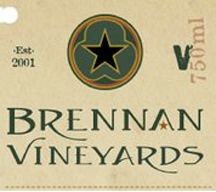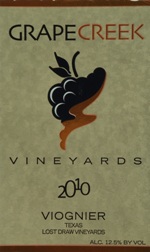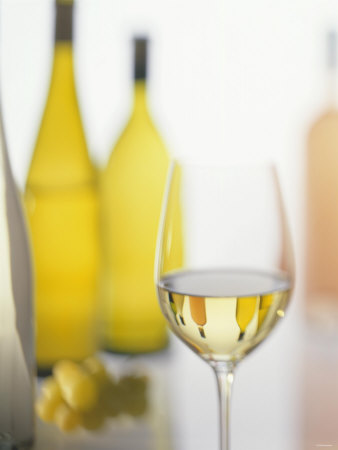A Story of the Three Texas Viogniers
As I selected this title, I had in my mind the story of Goldilocks and the Three Bears. You know, when Goldilocks got tired, she found one bed too soft, another too hard and the third was just right. Well, it seems that when it comes to Texas Viogniers, something close akin to this just might apply.
Why? Because there are a growing number of Texas-made Viogniers and this grape has quickly progressed deeply into our Texas wine Lexicon.
Last weekend I co-chaired a wine tasting panel at Culinaria (Culinary Arts and Wine Festival) in San Antonio where we did a Texas Two-Sip blind tasting: Texas versus non-Texas, sight unseen which was which.
Three of the six two-sip flights in the tasting were comprised of white wines. On the second flight, I asked the audience, “What was the grape variety from which the wines were made?” Nearly unanimously, the audience shouted out: “Viognier!” Well, they were wrong; the two Viognier wines were in the following flight. However, it goes to show how Texas wine drinkers have begun to associate Viognier with white wines made in their state. Click here for more.
Other recent tasting experiences have also illustrated to me how common “good quality” Texas Viogniers are becoming, and how varied, as well. It all started at the Texas Wine and Grape Growers Meeting in early March and the Buffalo Gap Wine and Food Summit followed. Since the start of this Viognier tasting escapade, I’ve tasted four different Viogniers: the first was from Lone Oak Winery and then I moved on to Kim McPherson’s McPherson Cellars Viognier (click here for blog post). Since then, I’ve had three more and all from the 2010 harvest. They were Viogniers from Brennan Vineyards, Grape Creek Vineyards and Becker Vineyards.
Words that might be used to describe this spectacle of Viogniers might include: abundance, cornucopia, or profusion depending on your point of view. In these regards, Texas Viogniers are not only getting plentiful, but they are getting acclaim. Check out this month’s featured Texas wine from Jessica Dupuy who does the feature on Texas Monthly’s “Eat My Words” blog.
The balance of my Viognier Manifesto focuses on another aspect of Texas Viogniers: they are starting to differentiate. By this, I mean that we are starting to see different styles emerge. Some of this may be due to the mindset of the winemaker, but it may also been due to the varying growing conditions across Texas. It may just be variation in the Brix (sugar content) of the grapes at harvest. At the TWGGA meeting we had a tasting of three Texas Viogniers made from grapes harvested at 21-23 Brix, 23-25 Brix, and over 25 Brix. All wines were made by the same winemakers using similar techniques. These three wines were remarkably different from one another.
I actually don’t know yet what is the predominant factor in determining the up and coming styles of Viognier in Texas (If you feel like you know, please feel free to comment). The following three wines are examples of Texas Viognier that offer high quality and also the room for wine drinkers to find the style of Viognier that they like best.
Brennan Vineyard Viognier 2010
This wine is the lightest and brightest of the bunch and it offers a pale straw complexion with yellow/green highlights in the glass. What follows is a near monochromatic experience of bright citrus (lemon-lime on the nose followed by a light floral component of citrus blossom). Immediately on the palate, the wine shows a hint of fruit sweetness followed by pear and peach with a subtle, yet long crisp finish. Recommendation: This wine is for those that normally find other Viogniers (particularly California-style Viogniers) too big, too ripe, or too floral for them. Pair with light seafood dishes such as flounder, shrimp or oysters.
wine is the lightest and brightest of the bunch and it offers a pale straw complexion with yellow/green highlights in the glass. What follows is a near monochromatic experience of bright citrus (lemon-lime on the nose followed by a light floral component of citrus blossom). Immediately on the palate, the wine shows a hint of fruit sweetness followed by pear and peach with a subtle, yet long crisp finish. Recommendation: This wine is for those that normally find other Viogniers (particularly California-style Viogniers) too big, too ripe, or too floral for them. Pair with light seafood dishes such as flounder, shrimp or oysters.
Grape Creek Vineyards Viognier 2010
Buil ding on a similar basis from the previous wine, the Grape Creek Viognier starts with citrus on the nose but adds two more notes (honeysuckle and yeasty characteristics) resulting in a three-part harmony of aromatic sensations. This wine yields a dry tasting experience dominated by peach and a long bright finish of lemon zest. Recommendations: This wine is likely the most food friendly of the bunch. The dominance of dryness and acidity on the palate will cut through sauces rich in butter or olive oil but used on light, spicy fare such as Shrimp Scampi or Asian/Indian cuisine (yellow curry with seafood and jasmine rice comes to mind).
ding on a similar basis from the previous wine, the Grape Creek Viognier starts with citrus on the nose but adds two more notes (honeysuckle and yeasty characteristics) resulting in a three-part harmony of aromatic sensations. This wine yields a dry tasting experience dominated by peach and a long bright finish of lemon zest. Recommendations: This wine is likely the most food friendly of the bunch. The dominance of dryness and acidity on the palate will cut through sauces rich in butter or olive oil but used on light, spicy fare such as Shrimp Scampi or Asian/Indian cuisine (yellow curry with seafood and jasmine rice comes to mind).
Becker Vineyards Viognier 2010
If the first two wines are monochromatic and a three tone chord, respectively, the Becker Viognier is a full polyphonic symphony, but crafted in aromas and taste. This wine is multilayered and changes significantly with time in the glass. It provides an exotic baseline of ripe peach and apricot that takes on tropical nuances as it lingers in the glass. Then, the wine erupts with aromas of honeysuckle and magnolia blossom and in time; a warm scented vanilla note wafts. But wait…there’s more. The mouthfeel is silky and soft and the taste oozes with ripe peach, nectarine and vanilla that lingers for minutes on the palate. Recommendation: This wine is best served colder than most white wines as it allows time for the tasting experience to evolve in the glass as the wine warms. Therefore, it serves a double purpose: good for sipping while cool, yet powerful enough for your most elaborate and powerful Mediterranean preparations like chicken with garlic, rosemary or herbs d’Provence, and citrus.
first two wines are monochromatic and a three tone chord, respectively, the Becker Viognier is a full polyphonic symphony, but crafted in aromas and taste. This wine is multilayered and changes significantly with time in the glass. It provides an exotic baseline of ripe peach and apricot that takes on tropical nuances as it lingers in the glass. Then, the wine erupts with aromas of honeysuckle and magnolia blossom and in time; a warm scented vanilla note wafts. But wait…there’s more. The mouthfeel is silky and soft and the taste oozes with ripe peach, nectarine and vanilla that lingers for minutes on the palate. Recommendation: This wine is best served colder than most white wines as it allows time for the tasting experience to evolve in the glass as the wine warms. Therefore, it serves a double purpose: good for sipping while cool, yet powerful enough for your most elaborate and powerful Mediterranean preparations like chicken with garlic, rosemary or herbs d’Provence, and citrus.
There you go…three Texas Viogniers, three very different, high quality wines. Depending on your preference choose the one to your liking: (a) light, bright and straightforward, (b) the intermediate play, or (c) the complex and exotically scented.
Which style is Texas Viognier? Well, right now and maybe forever, all of them. Enjoy the moment and we will see what happens.


Great wine story. Thanks for sharing.